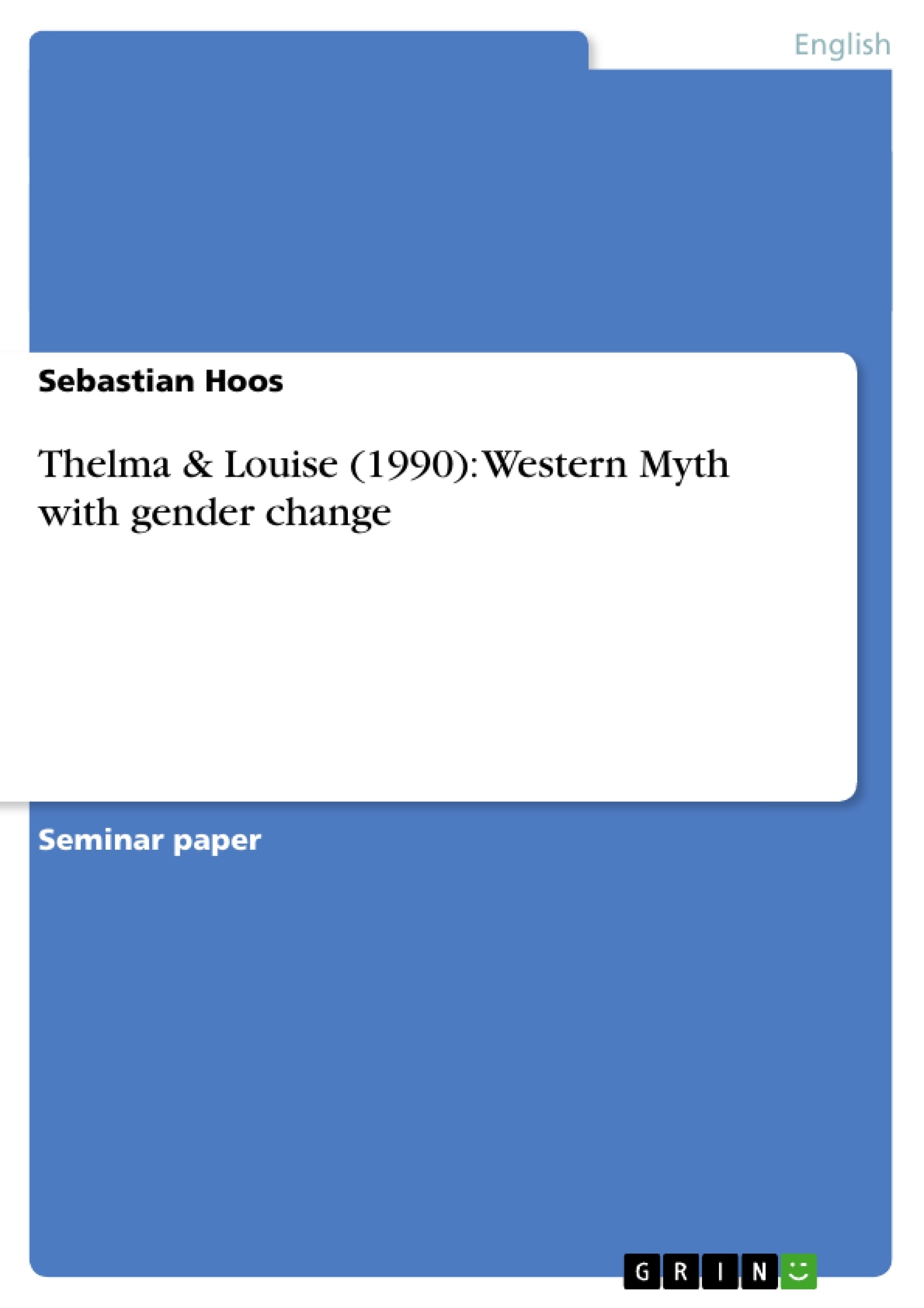University of Tübingen, Department for American Studies,
HS: The American West
Western Myth with gender change: Thelma & Louise (1990)
von: Sebastian Hoos
Abstract
The scientific community widely agrees that no region on earth shaped as many contemporary myths as the American West. The number of definitions of what is meant by „the West“ is close to the number of references made to it - in numerous fields. Only by looking at individual examples of western myth at work can we find ways to appoach the myth itself and its consequences. In this paper I want to illuminate the intellectual and cultural web that is worked into and created around the Hollywood-made motion picture „Thelma & Louise“. Following a rather broad attempt I want to give a comprehensive overview over all the printed reactions and reviews of this piece of discourse beginning with a few „traditional Westerns“ and a piece of generic criticism by a young female American film critic. Following that, the story of the movie will be recaptured, analyzed, and thereby, finally, interpreted. This paper is a revised and extended version of an earlier one presented to Prof. Jeff Bass at Baylor University, Texas, USA. Thanks to the excellent facilities and up to date media access of Moody Memorial Library on Baylor University campus I am apt to say that all relevant publications about this movie have been elaborated in my work. New insight about the recipience and interpretation of the western myth made me rewrite this paper specifically for a course on the American West.
Directory of content
p. 3 Introduction
p. 4 Chapter I : Recent Western Film Reviews
p. 5 Chapter II : Generic Criticism
p. 8 Chapter II : The Echo of „Thelma and Louise“ in Contemporary American Press and Film Literature
p.13 Chapter III : The Story of „Thelma and Louise“
p.15 Chapter IV : Analysis and Interpretation
p.19 Chapter V : Conclusion
p.21 Index of Utilized Literature
Inhaltsverzeichnis (Table of Contents)
- Introduction
- Chapter I: Recent Western Film Reviews
- Chapter II: Generic Criticism
- Chapter II: The Echo of, Thelma and Louise\" in Contemporary American Press and Film Literature
- Chapter III: The Story of „Thelma and Louise“
- Chapter IV: Analysis and Interpretation
- Chapter V: Conclusion
Zielsetzung und Themenschwerpunkte (Objectives and Key Themes)
This paper aims to analyze the cultural and intellectual web surrounding the film "Thelma & Louise," exploring the reactions and reviews of this movie within contemporary American press and film literature. The paper examines how "Thelma & Louise" reflects and critiques the traditional Western genre, analyzing the story, narrative, and characters.
- The Western Myth and Its Contemporary Manifestations
- Gender Roles and Representations in Western Cinema
- The Impact of "Thelma & Louise" on Western Film Criticism
- The Relationship between the Western Genre and American Culture
- The Role of Language and Narrative in Constructing Western Identity
Zusammenfassung der Kapitel (Chapter Summaries)
Chapter I examines recent reviews of classic Western films, highlighting the limited critical analysis and interpretation of individual films within the genre. Chapter II delves into generic criticism, using Jane Tompkins' "Language and Landscape: An Ontology for the Western" as an example to explore the inherent values and perspectives that shape Western film narratives.
Schlüsselwörter (Keywords)
The key themes and concepts explored in this paper include Western myth, gender, film criticism, generic criticism, American culture, narrative analysis, and the cinematic representation of violence and escape.
- Quote paper
- MA Sebastian Hoos (Author), 1995, Thelma & Louise (1990): Western Myth with gender change, Munich, GRIN Verlag, https://www.grin.com/document/35445



